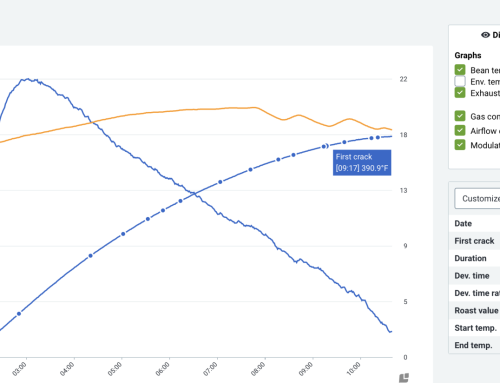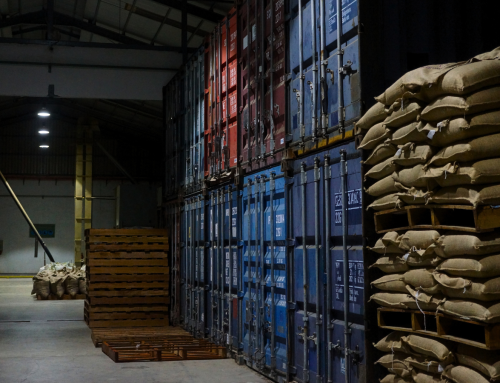Kenyan coffee has an impressive reputation – it’s renowned for its quality, its producers are highly attentive to detail when it comes to processing, and, most of all, for its unmistakable, distinctly Kenyan cup profiles. Kenyan coffees are some of the best in the world and Genuine Origin’s diverse selection of unroasted Kenyan coffees spans a variety of regions and nuance. But before we get roasting and cupping, let’s dive a little deeper into Kenya as a coffee origin, its coffee industry & what makes Kenyan coffee so unique.
Kenya Coffee History
Although Kenya and Ethiopia share a border, their coffee histories diverge significantly. French missionaries introduced coffee to Kenya in 1893, leading to the rise of large colonial coffee estates. The indigenous population was indirectly barred from obtaining coffee growing licenses themselves, to protect the interests of colonial landowners who relied on local labor to tend their farms.
After the country gained independence in 1963 in response to the Mau Mau uprising in 1954, the primarily British-owned farms were redistributed to Kenyan smallholders.
Since 1934, Kenyan green coffee could only be traded on an open auction system run by the government, as part of the 1933 Coffee Act. It’s a highly transparent system, rewarding higher quality with higher prices. It also served as the inspiration behind the Cup of Excellence auctions that take place all over the world.
Until 2006, green coffee from Kenya could only be traded through the auction system. However, new legislation has since allowed producers to sell directly to buyers, transforming the industry. When coffee is sold through the auction, it’s subject to a long chain of middlemen. Now with direct negotiation, there is more potential for farmers to earn a higher portion of the sale price themselves.

Kenyan coffee factory tanks for washed processing
Kenya Coffee Production
While Kenyan coffee is revered by roasters and coffee enthusiasts alike, the country is a relatively small producer. Today, Kenya is the 19th largest coffee origin in terms of coffee production. Kenya produces mostly Arabica coffee. The Kenyan coffee industry has maintained its reputation for quality and through meticulous management at the washing stations – aka factories in Kenya. Nationwide, over 600,000 smallholder farmers are organized into Farmer Cooperative Societies (FCS). These cooperatives play a crucial role in overseeing traceability and quality control for their members. Around 550 co-ops market over 80% of Kenyan coffee, while corporations and individually-owned businesses market the rest.
Most of the FCS’s have their own wet mills and processing facilities that are run by full-time management staff. Quality control is rigid and detail-oriented, from cherry sorting to fermentation scrutiny and green bean sorting. For these reasons, wash-processed Kenyan coffees continue to be known for their clean cup quality and sparkling, distinct flavors.
According to the USDA’s Coffee Annual forecast for the 2024/2025 harvest, Kenyan coffee production is expected to decrease by around 6.3% to 750,000 60-kg bags. The declining volume is mainly due to stagnation in the amount of farmland and an increasing urban footprint. The Coffee Research Institute (CRI) is also experiencing funding constraints, leading to a shortage of certified planting materials.

Coffee being auctioned at Kenya’s coffee exchange
In July 2023, the Kenyan government implemented a major reforms in the coffee industry. They abolished marketing agents and prohibited businesses from holding multiple vertical function licenses. Previously, marketing agents could hold licenses, for example, for both marketing and farmer payments. Now, licenses for trading, roasting and payment systems are managed and distributed by separate entities.
With the de-licensing of marketing agents, the inputs and support programs they once provided have been discontinued. The transition to the new Direct Settlement System (DSS) platform for all coffee sales handled by the Nairobi Coffee Exchange—which accounts for 90% of Kenya’s coffee sales—is expected to cause payment delays during this period.
With all the policy and licensing changes, some of Kenya’s larger coffee mills have ceased operations. This has led to unprecedented delays in coffee production. Kenyan coffee farmers are experiencing congestion as they clamor to mill their coffee with the New Kenya Planters’ Cooperative Union or the remaining local dry mills owned by cooperatives.
While Kenya has its challenges, the USDA report indicates positive notes from the field. Changes in rain patterns have had little effect on production, and most of the early 2024 crop has escaped coffee berry disease.
Key Facts about Kenyan Coffee
- Coffee was introduced to Kenya in 1893 by French missionaries.
- Most Kenyan coffee is sold through an auction system.
- In Kenya coffee mills are called factories.
- Kenya is the 19th largest coffee-producing origin according to the USDA.
- USDA projects Kenya’s coffee output to decrease by 6.3%.
- Most Kenyan coffees are blends of the SL-28, SL-34, Batian, Ruiru-11 and Kent varieties.
- The “SL” in varieties such as SL-28 and SL-34 stands for Scott Labs, which developed the coffee varieties.
- Green coffee from Kenya is graded by screen size ranging from E (Elephant Bean); PB (Peaberry); AA; AB; C; TT; T; and MH/ML.

Ripe red Kenya coffee cherries
Common Kenyan Green Coffee Varietals
Among the most celebrated coffee varietals found in Kenya are SL-28 and SL-34. Developed by Scott Agricultural Laboratories (hence, SL) in the 1930s, these two varieties offer superior drought resistance, exceptional cup quality, and strong yield at high altitudes.
Following a coffee berry disease (CBD) epidemic in 1968, the CBD-resistant Ruiru-11 varietal was introduced and quickly adopted nationwide. In 2010, the CRI developed Batian, another disease-resistant variety prized for its tall, hardy growth and manageability. Kent is another variety widely grown in Kenya, although it was developed in India in the early 20th century.
Most Kenyan coffees are blends of the SL-28, SL-34, Batian, Ruiru-11 and Kent varieties.

QC lab in Kenya setting up a table to be cupped
Kenya Green Coffee Producing Regions
Coffee grows in four regional clusters in Kenya that stretch from Mount Kenya south to Nairobi. They are:
Central Region: The central region of Kenya is one of the most fertile areas in the country and a major hub for coffee cultivation, historically. Key coffee-growing counties include Nyeri, Kiambu, Murang’a, Kirinyaga, and Thika. In addition to numerous small-scale farmers, this region hosts many of the country’s large coffee estates. Farmers in the area also engage in tea, dairy, and horticultural farming.
Eastern Region: The eastern region boasts high-altitude areas such as Meru, ideal for coffee growing. Other notable coffee-producing counties in this region include Embu, Machakos, and Tharaka. The region is largely semi-arid, and coffee production is the main economic driver for people there.
Coastal Region: Despite its predominantly arid conditions and limited rainfall, the coastal region of Kenya still supports coffee cultivation in areas like Taita Taveta. The region compensates for its lack of rain with ample sunshine, essential for coffee growth and drying.
Western Region: The western region of Kenya benefits from fertile soils and consistent annual rainfall. Some of the country’s finest coffee beans are produced in Eldoret, Bungoma, Kakamega, and Vihiga. The people rely on crop production and animal rearing, with main crops including maize, beans, finger millet, sweet potatoes, and more. Cash crops, on the other hand, include coffee, sugar cane, cotton, palm oil, sunflower, and tobacco.

Kenya green coffee at the Coffee Exchange
Quality Standards for Kenya Green Coffee
Green coffee from Kenya is graded by screen size. The grades range from E (Elephant Bean), PB (peaberry), AA, AB, C, TT, T, and MH/ML for a total of eight grades. In Kenya, larger beans signify that the coffee contains more oils and sugars that positively enhance the taste and aroma of the coffee, which is why AA Kenya green coffee like this one from the New Irati Factory features bright flavors of black cherry, tropical fruit, sweet caramel, and aromas of roasted hazelnut and florals.
Kenyan peaberry coffee, where only a single coffee bean grows inside a cherry instead of the typical twin beans, is highly sought-after. Because only one bean matures, the peaberry usually develops with more sugars and nutrients than twin beans that share a cherry. That’s also why peaberries are rounder and denser than most coffee beans.

Kenyan coffee packed in jute bags
What does coffee from Kenya taste like?
Kenyan green coffee beans are renowned for their bold, fruit-forward flavors and complex acidity. The acidity often veers toward the tannic – think of wines, cranberries, and grapefruit peel. The country’s unique combination of fertile soil from an active volcano system, stable two-season climate, and altitudes from 1,400-2,000masl creates the perfect conditions for high quality Arabica coffee production.
Find out more about our unroasted coffee from Kenya by visiting the Kenya catalogue on our website: https://www.genuineorigin.com/kenya






